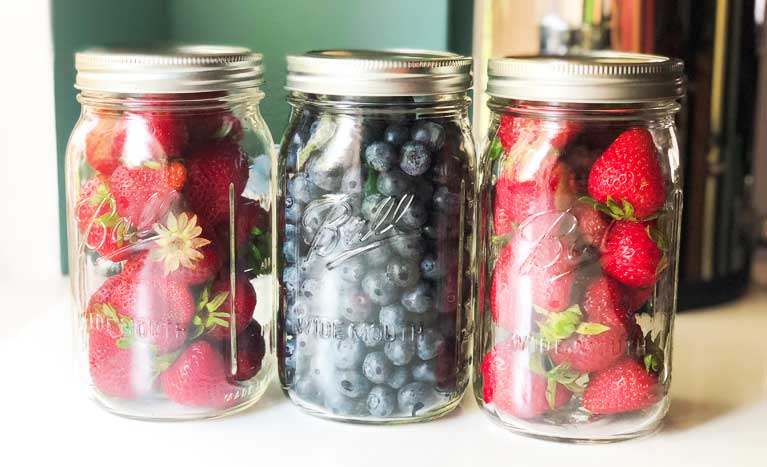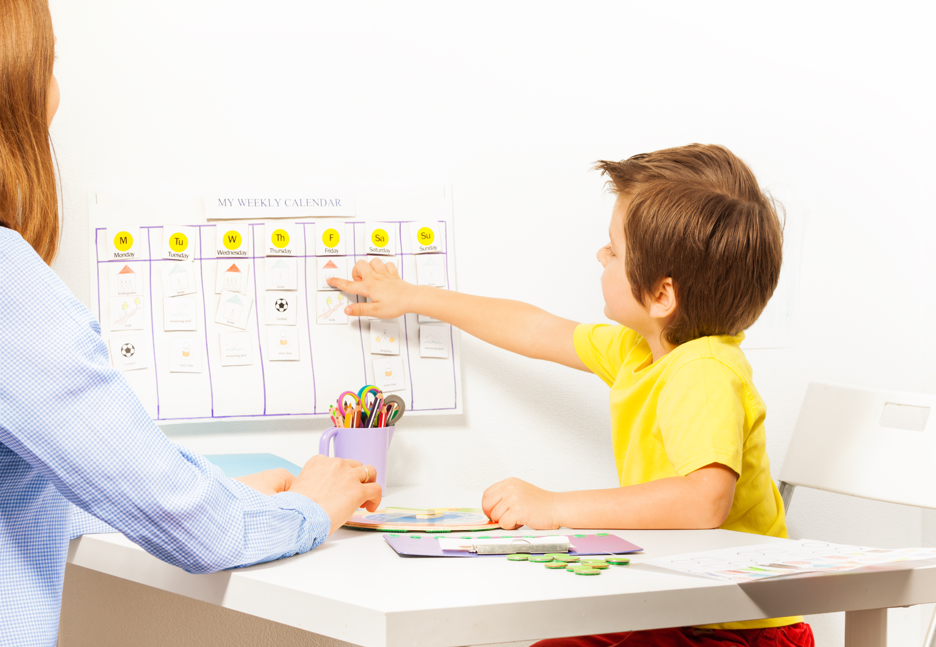When you create communication and learning opportunities as you go about your normal daily routine, you help your child learn, practice, and generalize skills. As discussed in our previous post, arranging the environment in a structured way increases your child’s motivation to communicate. Mealtimes offer wonderful opportunities to work on teaching language as there is inherent structure and motivation already ingrained in the activity. If it feels too overwhelming to turn every meal into an instructional activity, start with just one meal a day.
Teaching and Shaping Requests
One easy way to create mealtime learning opportunities, increase motivation and create more practice opportunities is to offer small portions of the meal with pauses in between offerings to elicit communication. Using clear containers can be helpful for this, so that your child can see the food but will need to communicate for more. For example, if your child really enjoys blueberries, give them a bowl with three or four berries and put the rest of the berries in a clear container with a lid. Each time they finish their berries and want more, they will have an opportunity to learn how to make a verbal request.

You can model the word you are teaching while giving them more, in this example saying “berry” or “blueberry” as you put a couple more in their bowl. After modeling this a few times, purposefully pause while holding out the berries to give your child an opportunity to make a request.
Initially, you might reinforce your child looking at you by giving them more berries. This is helpful if you are trying to teach your child to make eye contact with others more frequently. Next, you might hold out until your child makes a sound – any babbling sound that is not a cry or protest. You might revert back to modeling the target sound word “berry,” while delivering a few more before pausing purposefully again. Gradually, you will offer the blueberry for closer and closer approximations of the word.
Generalizing and Expanding
As your child starts making requests and acquiring more language, you can use mealtimes to work on expanding their vocabulary. For example if your child can name most food items in their regular diet, you can start working on adding descriptors to requests. Many foods come in different colors, so this can be a great place to start. If your child requests an apple, hold a green apple in one hand and a red apple in the other. While showing them each apple, ask “do you want a green apple (put out hand with green apple) or red apple (put out hand with red apple)?”

Follow the same strategy as before, reinforcing closer and closer approximations until they can provide the full request without help. Provide reinforcement by giving them slices or chunks of the color apple they chose. You can use the same teaching process to expand your child’s vocabulary to include other descriptors such as shapes (round cracker or square cracker), numbers (1 cheese stick or 2 cheese sticks) and size (small carrot or big carrot).
Another way to create mealtime learning opportunities is by thinking about what other things your child may need in order to eat their meal and intentionally leaving some of them out. For example, giving them yogurt but no spoon or cereal but no milk. Similarly you can give your child foods in closed containers or packages that they can’t open. Then wait to see if they try to request for “open” or “help”. If they don’t make a request, you can give a suggestive prompt such as “hmmm, what do you need?” Then provide them with a model and reinforce their attempt at a request by opening the food. You can also give them un-peeled or uncut items to encourage them to request for “open” “cut” or “help”.
Takeaways
There are so many ways to help your child advance their language skills from the comforts of home during mealtimes. Stay tuned for more ideas to help young children with special needs connect and communicate.
Download free printable feeding resources.
Download our free printable toddler communication resource guide.
If you are looking for more quick tips on how to use ABA strategies at home visit our Youtube channel.
You can also find more articles on a variety of ABA strategies here.




